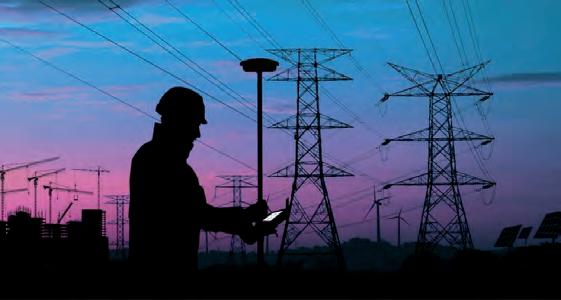UAV AND LIDAR
by NORBERT HAALA, MICHAEL KÖLLE, AND DOMINIK LAUPHEIMER
Integrating UAV-based Lidar and Photogrammetry
Dense 3D Point Cloud Generation with Ultra-high Precision Recent unmanned aerial vehicle (UAV or ‘drone’) platforms jointly collect imagery and Lidar data. Their combined evaluation potentially generates 3D point clouds at accuracies and resolutions of some millimetres, so far limited to terrestrial data capture. This article outlines a project that integrates photogrammetric bundle block adjustment with direct georeferencing of Lidar point clouds to improve the respective accuracy by an order of magnitude. Further benefits of combined processing result from adding Lidar range measurement to multi-view-stereo (MVS) image matching during the generation of highprecision dense 3D point clouds.
The project was aimed at the areacovering monitoring of potential subsidence of about 10 mm/year by a repeated collection of very accurate and dense 3D point clouds. The considerable size of the test site in Hessigheim, Germany, prevents terrestrial data capture. As shown in Figure 1, the site consists of built-up areas, regions of agricultural use and a ship lock as the structure of special interest.
For traditional monitoring, a network of several pillars was established in the vicinity of the lock. As depicted in Figure 2, photogrammetric targets signalised the pillars to make them available as check and control points for georeferencing. For UAV data collection, a RIEGL RiCopter octocopter was used equipped with a RIEGL VUX-1LR Lidar sensor and two Sony Alpha 6000 oblique cameras. With a nominal flying
Figure 1: Test area at the Neckar River in Hessigheim, Germany.
altitude of 50m above ground level, a strip distance of 35m and a scanner field of view (FoV) of 70°, the system captured 300-400 points/m² per strip and 800 points/m² for the entire flight block due to the nominal side overlap of 50%. The flight mission parameters resulted in a laser footprint diameter on the ground of less than 3cm with a point distance of 5cm. The ranging noise of the scanner is 5mm. The trajectory of the platform was measured by an APX20 UAV GNSS/IMU system to enable direct georeferencing. The two Sony Alpha 6000 oblique cameras mounted on the RiCopter platform have a FoV of 74° each. Mounted at a sideways-looking angle of ±35°, they captured imagery at a ground sampling distance (GSD) of 1.5-3cm with 24 megapixels each. LIDAR STRIP ADJUSTMENT AND AUTOMATIC AERIAL TRIANGULATION After direct georeferencing, a typical Lidar workflow includes a strip
34 Winter 2020
34-35-36-37-38_haala.indd 34
02-12-20 16:43





